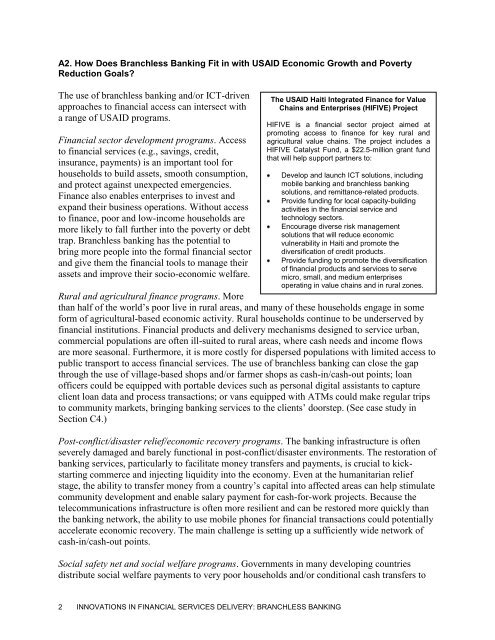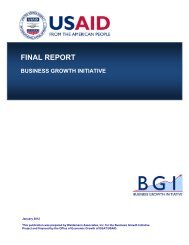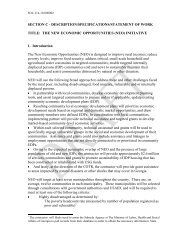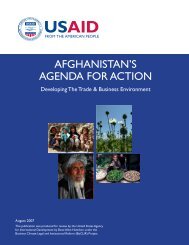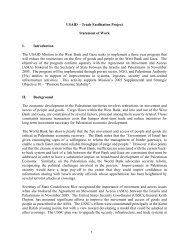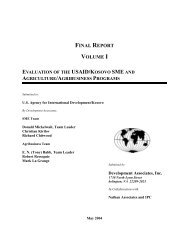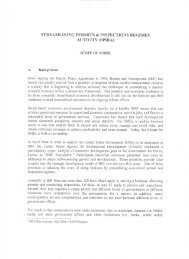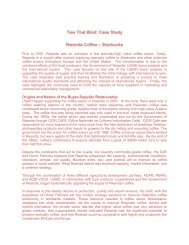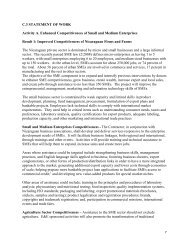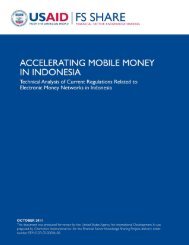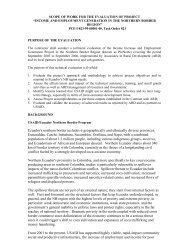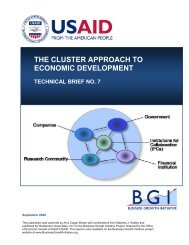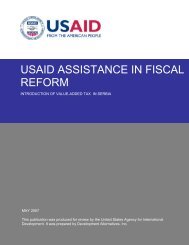FS SERIES #11 - Economic Growth - usaid
FS SERIES #11 - Economic Growth - usaid
FS SERIES #11 - Economic Growth - usaid
You also want an ePaper? Increase the reach of your titles
YUMPU automatically turns print PDFs into web optimized ePapers that Google loves.
A2. How Does Branchless Banking Fit in with USAID <strong>Economic</strong> <strong>Growth</strong> and Poverty<br />
Reduction Goals<br />
The use of branchless banking and/or ICT-driven<br />
approaches to financial access can intersect with<br />
a range of USAID programs.<br />
Financial sector development programs. Access<br />
to financial services (e.g., savings, credit,<br />
insurance, payments) is an important tool for<br />
households to build assets, smooth consumption,<br />
and protect against unexpected emergencies.<br />
Finance also enables enterprises to invest and<br />
expand their business operations. Without access<br />
to finance, poor and low-income households are<br />
more likely to fall further into the poverty or debt<br />
trap. Branchless banking has the potential to<br />
bring more people into the formal financial sector<br />
and give them the financial tools to manage their<br />
assets and improve their socio-economic welfare.<br />
The USAID Haiti Integrated Finance for Value<br />
Chains and Enterprises (HIFIVE) Project<br />
HIFIVE is a financial sector project aimed at<br />
promoting access to finance for key rural and<br />
agricultural value chains. The project includes a<br />
HIFIVE Catalyst Fund, a $22.5-million grant fund<br />
that will help support partners to:<br />
Develop and launch ICT solutions, including<br />
mobile banking and branchless banking<br />
solutions, and remittance-related products.<br />
Provide funding for local capacity-building<br />
activities in the financial service and<br />
technology sectors.<br />
Encourage diverse risk management<br />
solutions that will reduce economic<br />
vulnerability in Haiti and promote the<br />
diversification of credit products.<br />
Provide funding to promote the diversification<br />
of financial products and services to serve<br />
micro, small, and medium enterprises<br />
operating in value chains and in rural zones.<br />
Rural and agricultural finance programs. More<br />
than half of the world’s poor live in rural areas, and many of these households engage in some<br />
form of agricultural-based economic activity. Rural households continue to be underserved by<br />
financial institutions. Financial products and delivery mechanisms designed to service urban,<br />
commercial populations are often ill-suited to rural areas, where cash needs and income flows<br />
are more seasonal. Furthermore, it is more costly for dispersed populations with limited access to<br />
public transport to access financial services. The use of branchless banking can close the gap<br />
through the use of village-based shops and/or farmer shops as cash-in/cash-out points; loan<br />
officers could be equipped with portable devices such as personal digital assistants to capture<br />
client loan data and process transactions; or vans equipped with ATMs could make regular trips<br />
to community markets, bringing banking services to the clients’ doorstep. (See case study in<br />
Section C4.)<br />
Post-conflict/disaster relief/economic recovery programs. The banking infrastructure is often<br />
severely damaged and barely functional in post-conflict/disaster environments. The restoration of<br />
banking services, particularly to facilitate money transfers and payments, is crucial to kickstarting<br />
commerce and injecting liquidity into the economy. Even at the humanitarian relief<br />
stage, the ability to transfer money from a country’s capital into affected areas can help stimulate<br />
community development and enable salary payment for cash-for-work projects. Because the<br />
telecommunications infrastructure is often more resilient and can be restored more quickly than<br />
the banking network, the ability to use mobile phones for financial transactions could potentially<br />
accelerate economic recovery. The main challenge is setting up a sufficiently wide network of<br />
cash-in/cash-out points.<br />
Social safety net and social welfare programs. Governments in many developing countries<br />
distribute social welfare payments to very poor households and/or conditional cash transfers to<br />
2 INNOVATIONS IN FINANCIAL SERVICES DELIVERY: BRANCHLESS BANKING


